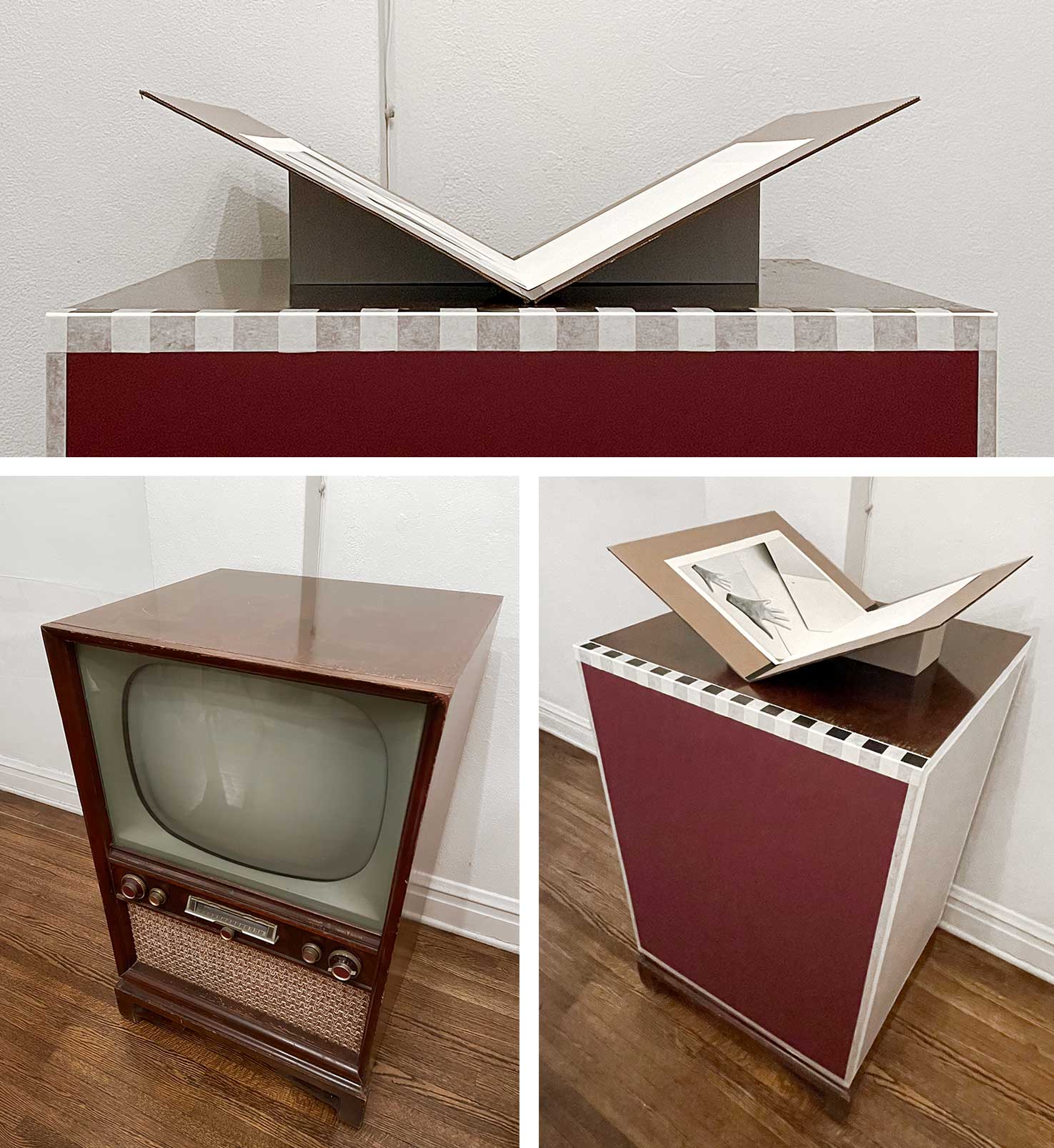Open House
2023
Exhibition in Coach House 1, a private apartment designed by Edgar Miller, Jesús Torres, and others, in the Old Town neighhborhood of Chicago.
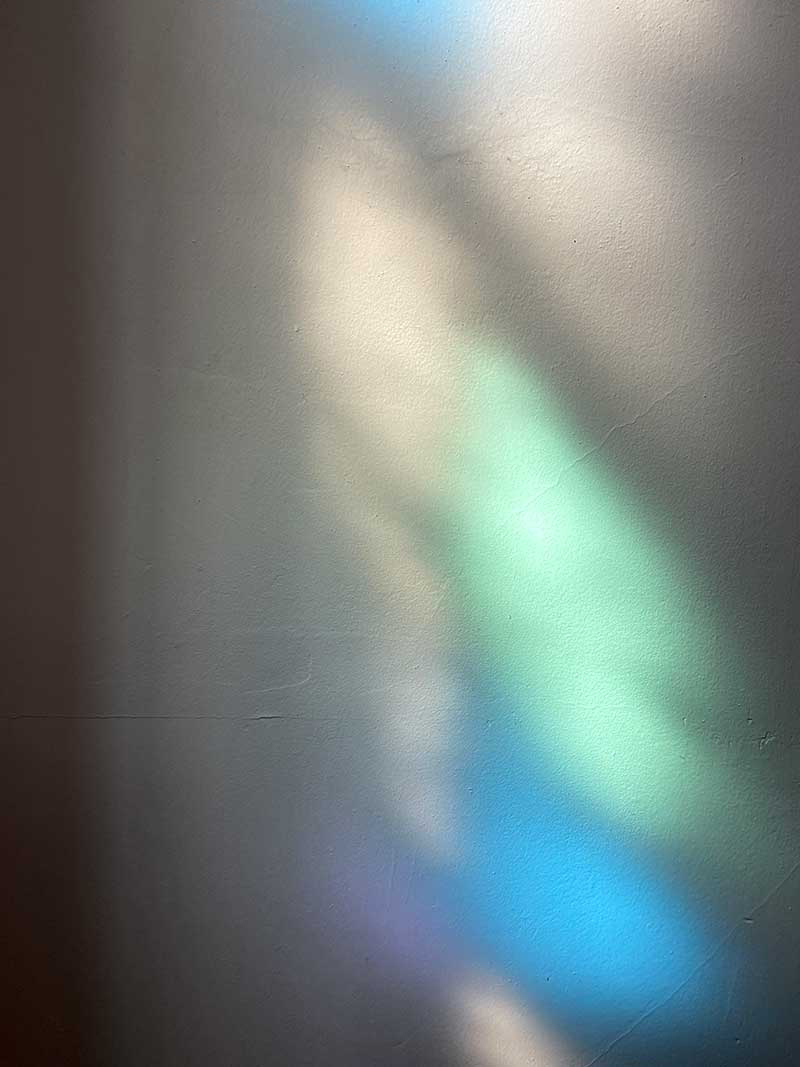
Light reflection on wall, 04/08/2023, 3:09pm
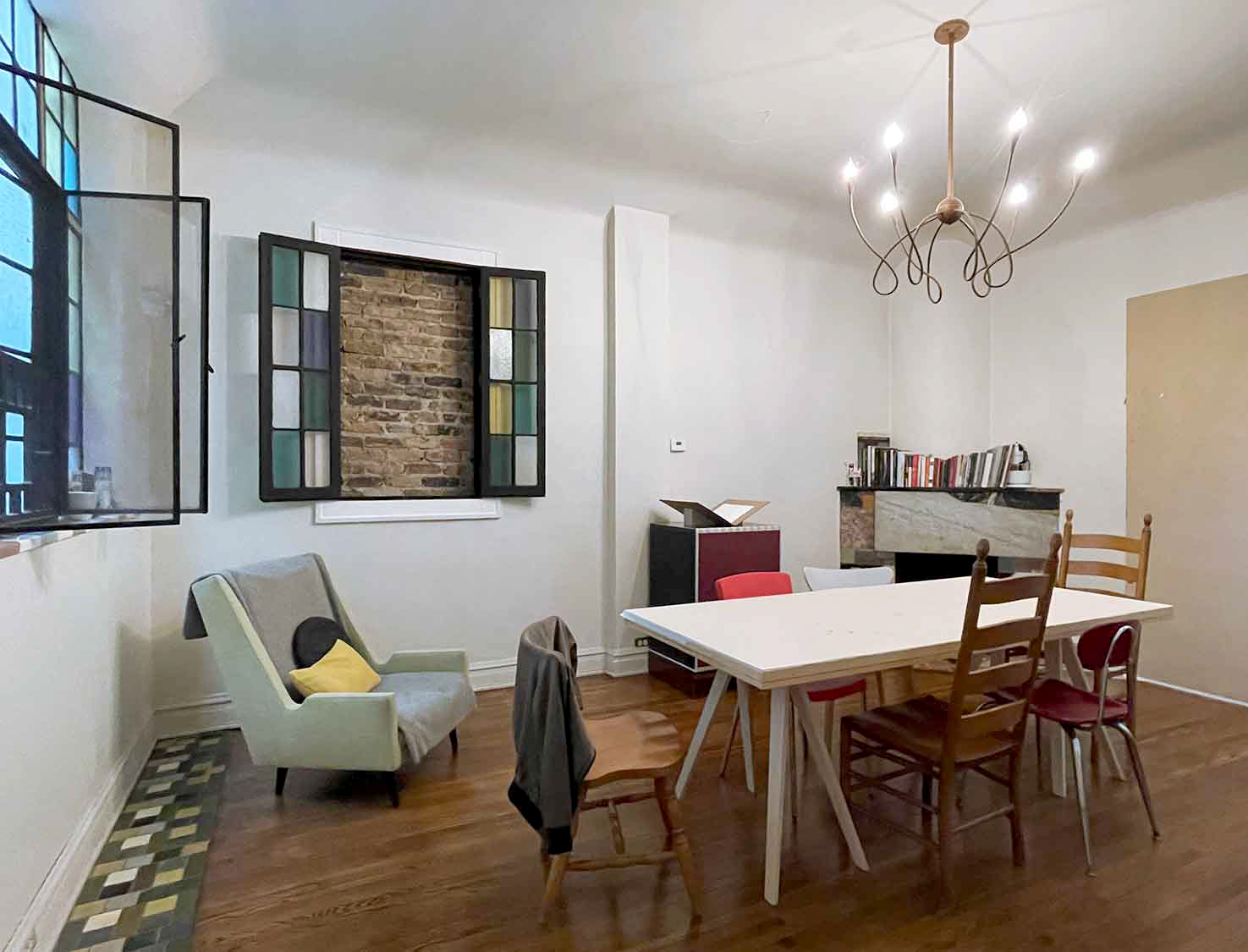
Live/work area: Stained glass windows by Edgar Miller, fireplace and floor tiles by Edgar Miller and/or Jesús Torres; Assembly #1 (butter board, white tape, wood frame, hollow-core door, trestles, four existing as well as two added chairs); existing arm chair, dressed (wool blanket, felt pillow, wool pillow); Period Piece (existing cabinet TV, colored boards, black and white artist tape, masking tape); Untitled (archival print, 12” x 17”, folded, archival paper, 13" x 19", folded, cardboard, grey board, 18”x 22” x 6”)
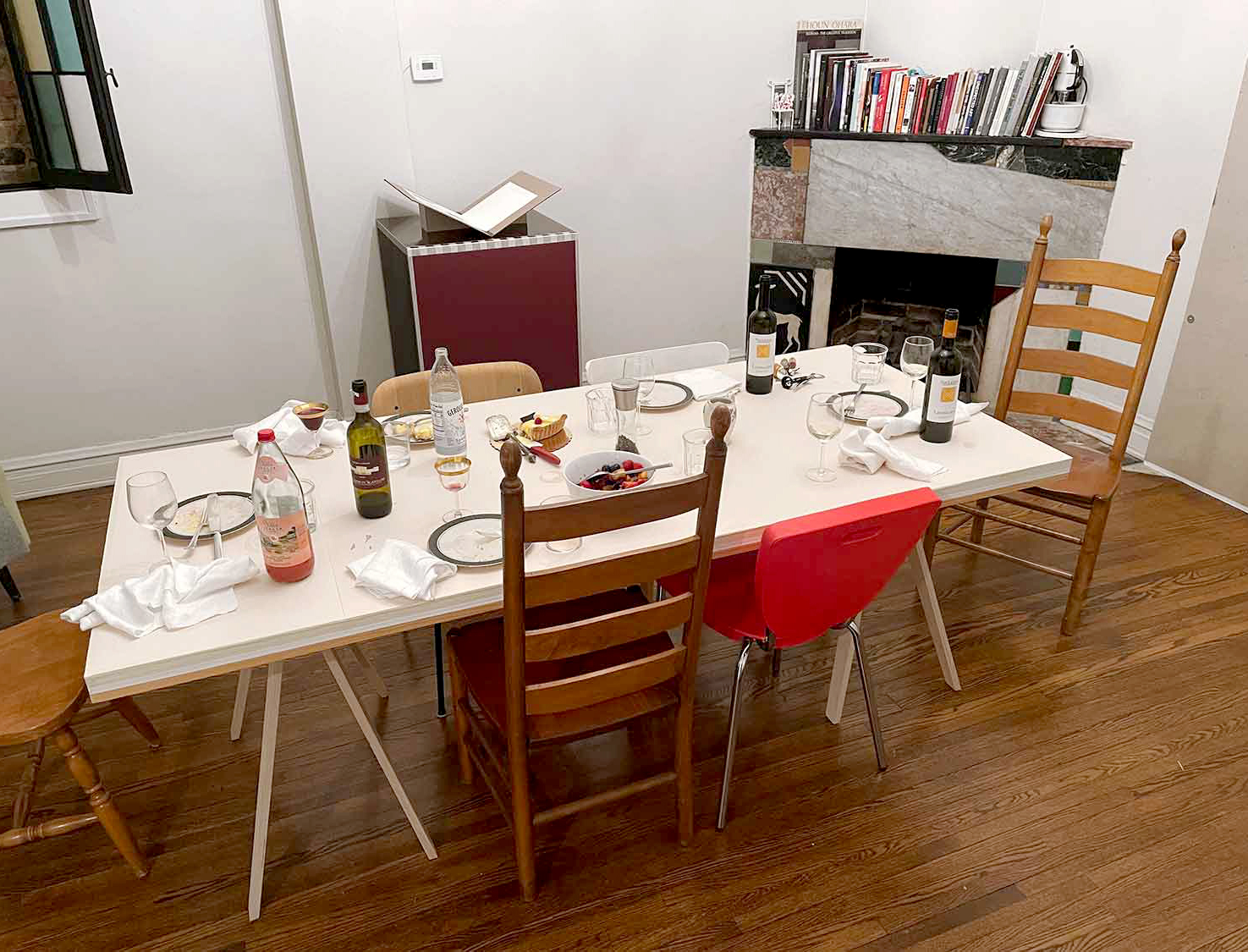
Assembly #2 (butter board, white tape, wood frame, hollow-core door, trestles, dinner ware, glasses, cutlery, food leftovers, bottles, bottle operner, napkins, four existing as well as two added chairs)
Coach House 1 is part of a building complex formerly known as the Carl Street Studios. Financed by Sol Kogen and created through the collaboration of artists/designers Edgar Miller, Jesús Torres, and many others, work on the artist colony started with the remodeling of an existing Victorian mansion beginning in 1927 and grew into a sprawling configuration of interrelated buildings over the next decades. The building complex received landmark status in 2016.
Invited by the current resident of Coach House 1 to create an exhibition in this space, I developed Open House to highlight the designs of Miller and Torres while responding to the resident’s existing furnishings. The work also recontextualizes the space in relation to the art discourse of its time–which included both an aesthetic and political reckoning as well as experimentation in the face of rapid industrialization and financial instability–and the impact it had on society.
Since this apartment belongs to a private building complex, Open House had limited public access and was only open for one weekend (May 14/15). A dinner event with invited guests proceeded the opening.
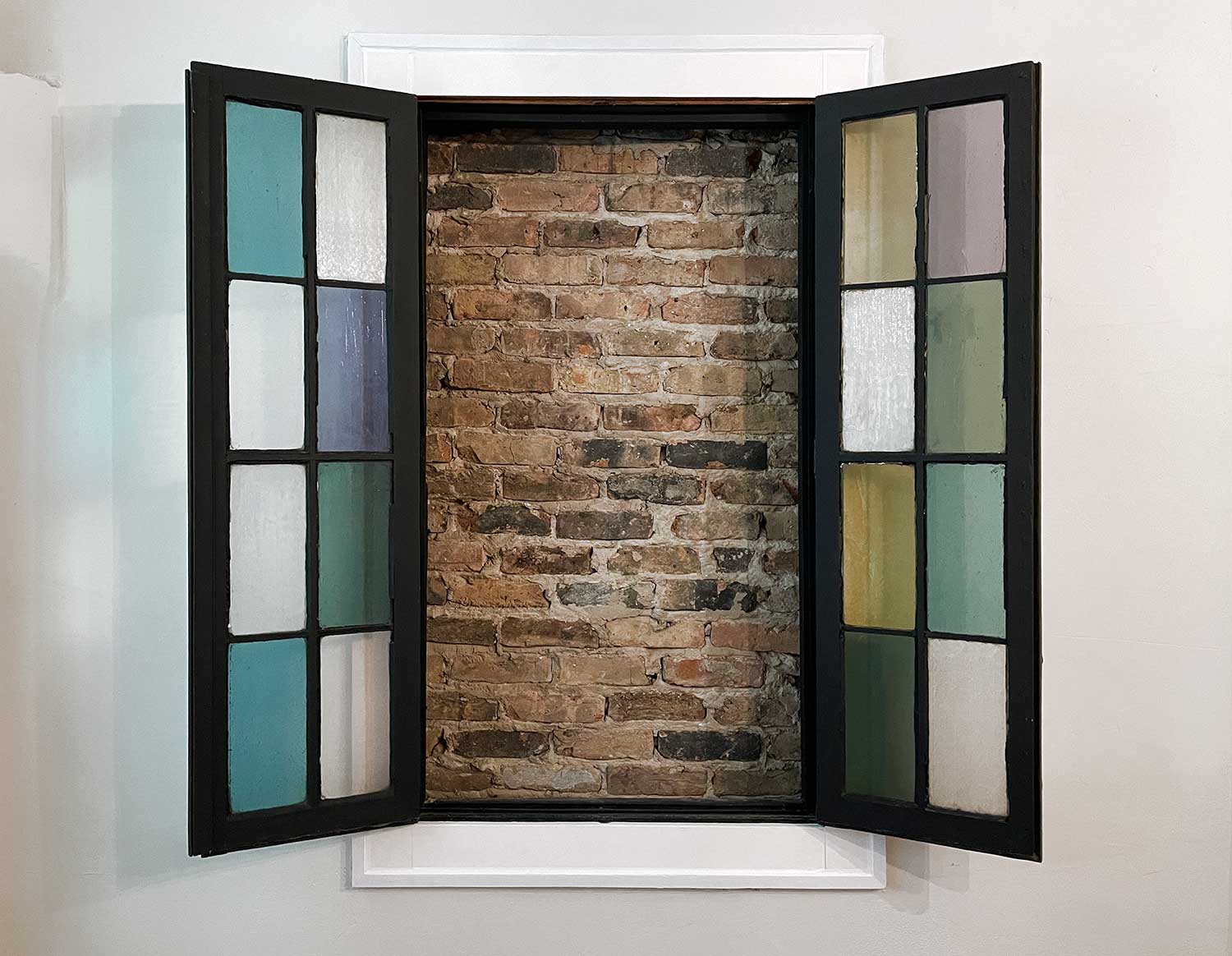
Interiority 1 (opened East-facing stained glass window by Edgar Miller, white board, white and black artist tape); see window default state
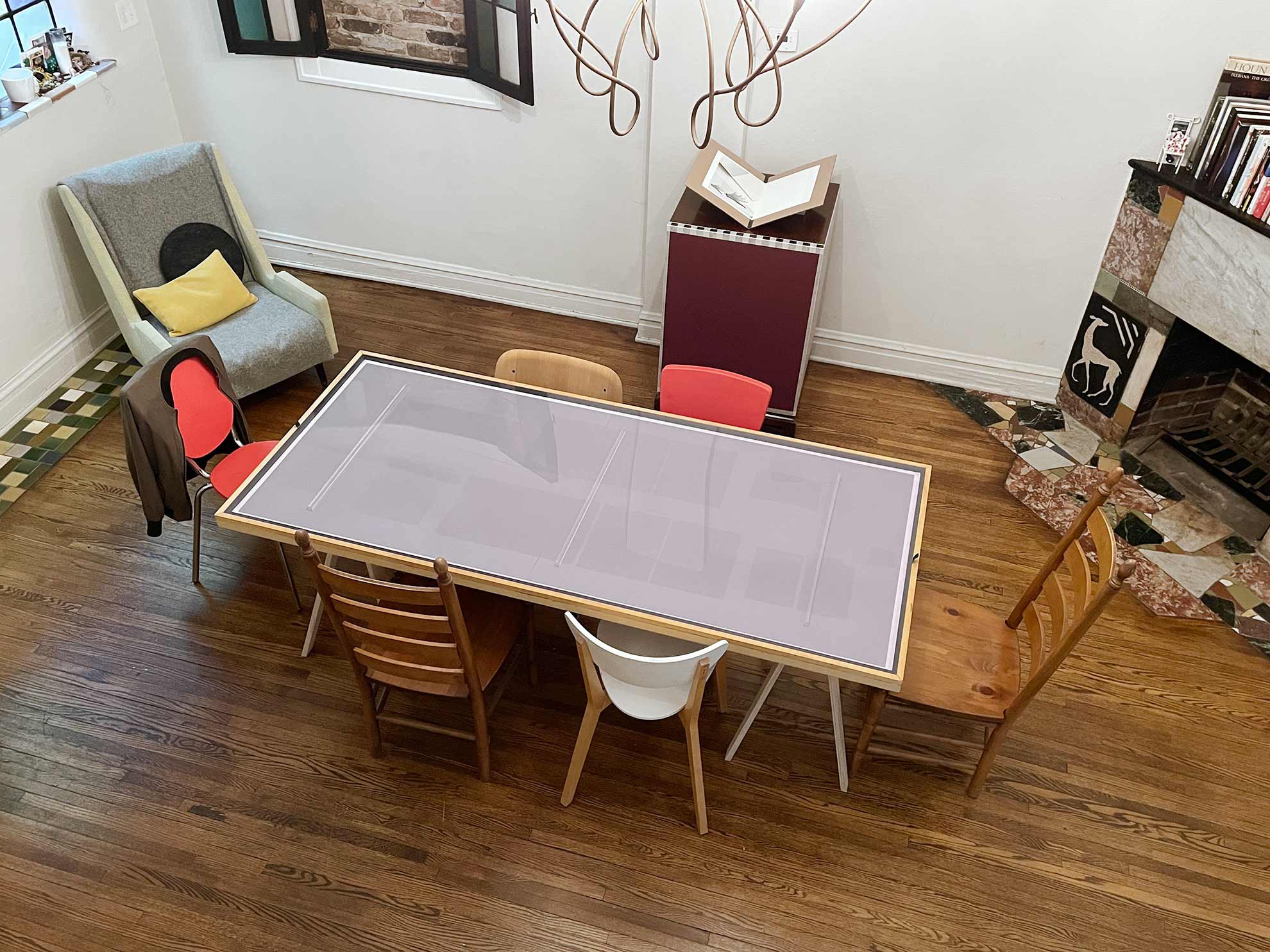
Assembly #3 (plexiglass sheet, plexiglass rods, sun-exposed museum board with traces of objects and papers, balsa wood, white & black tape, wood frame, hollow-core door, textile straps, trestles, four existing as well as two added chairs)
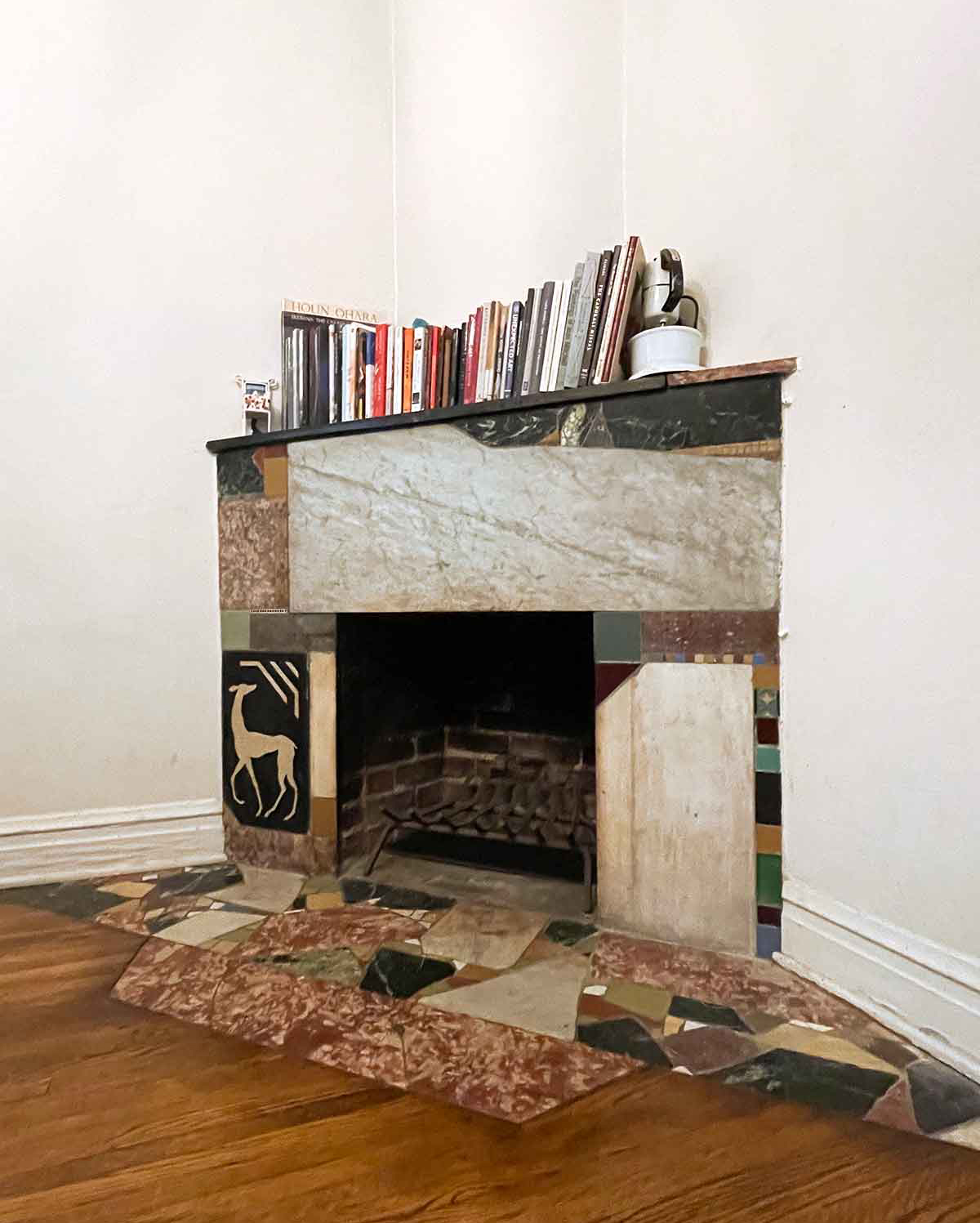
Fireplace by Edgar Miller and/or Jesús Torres; books and bookends by resident
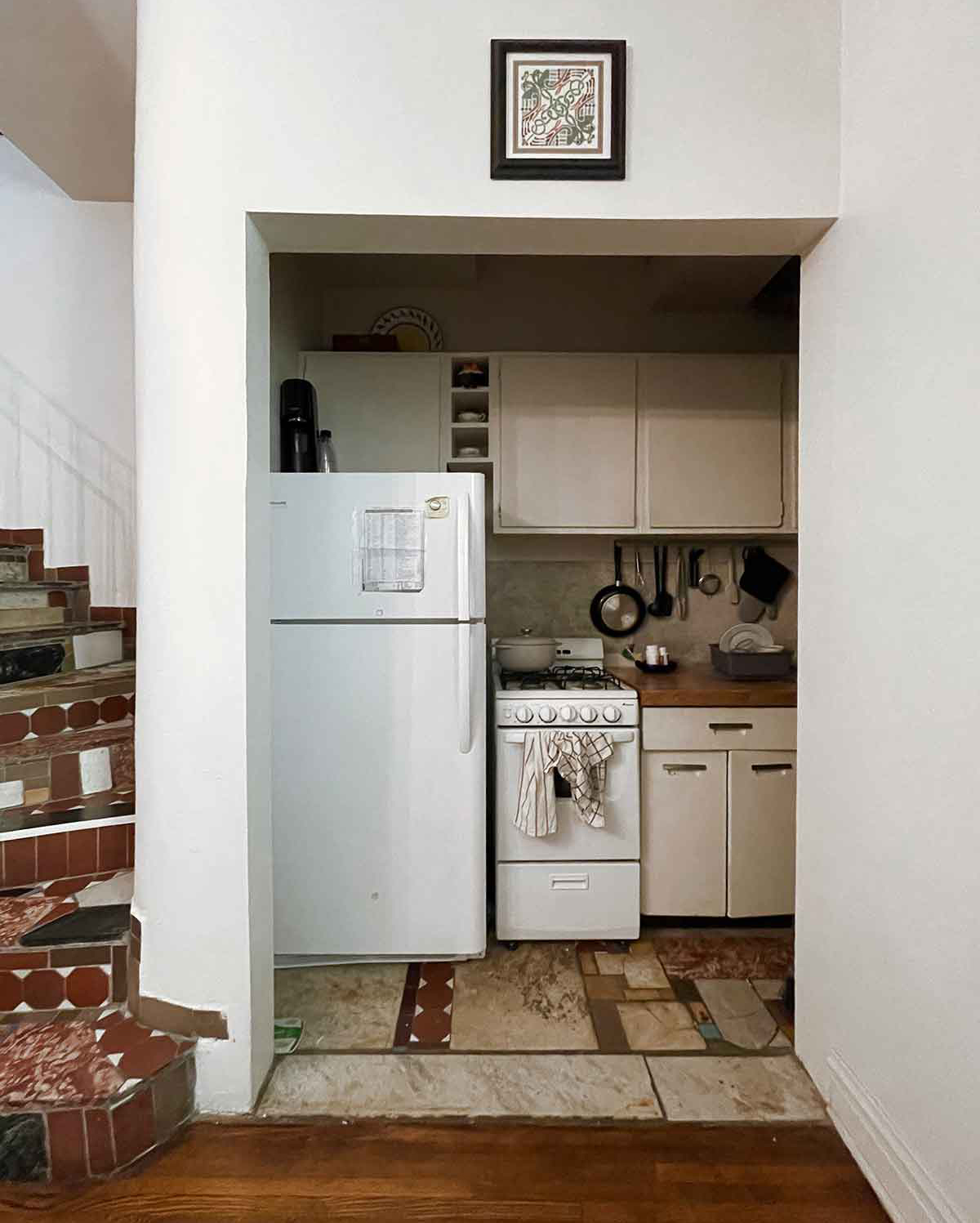
Tiled stairs by Edgar Miller and/or Jesús Torres; kitchen; existing needlework, framed, above opening
Kogen, Miller, and Torres used materials that were reclaimed from demolished mansions in the area, demolished buildings from the 1933 Century of Progress World's Fair and the Maxwell Street Market. Kogen also purchased entire stocks of tiles from vendors, who were forced into bankrupcy during the Great Depression.
Today, the former Carl Street Studios have become privately owned residencies, some of which have been consolidated into larger units. The largest apartments have been featured in magazines and publications highlighting their elaborate painted and stained glass windows, bas-relief friezes, tile mosaics, and wood carvings. Coach House 1, in comparison, is a very modest structure in terms of its size, designs, and materials.
For Open House the resident removed some of her furniture and belongings (including a foldable worktable, a foldable kitchen table, a wooden coffee table, various shelves, art materials, tools, and sketches as well as an ironing board and a bike) while keeping others (arm chairs, TV furniture, a variety of chairs, homasote pin board, bed, and side table).
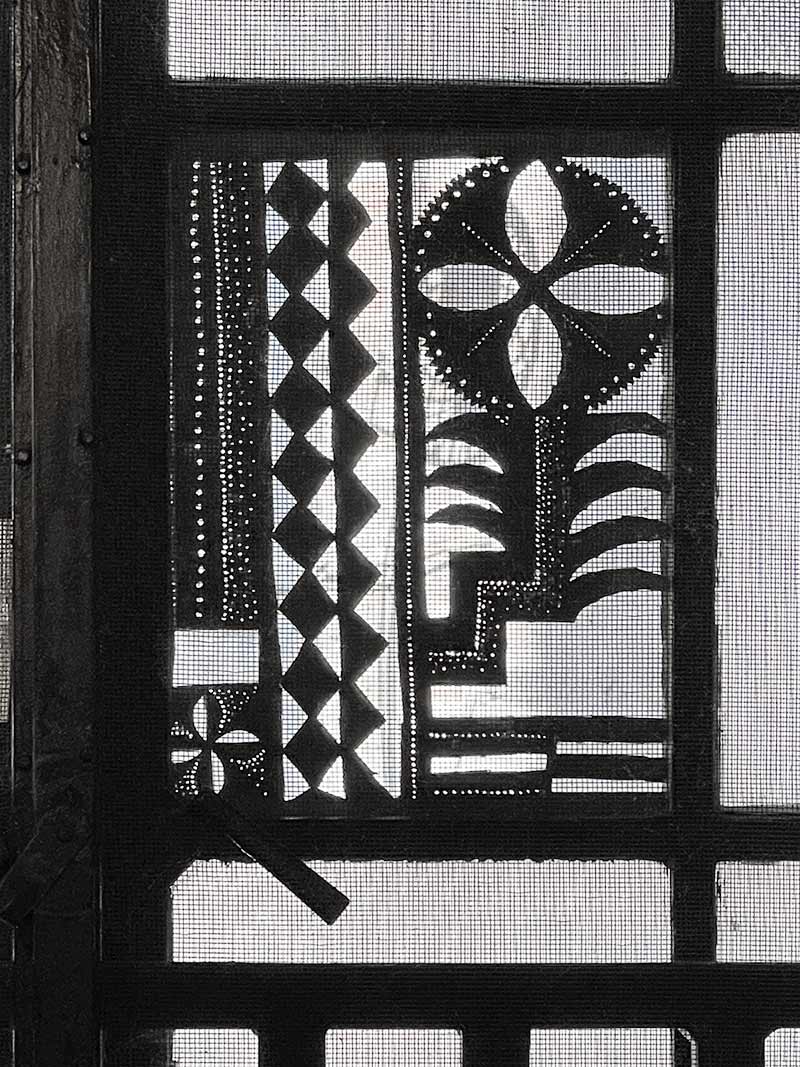
Detail of tin cutout; lead framing; window screen
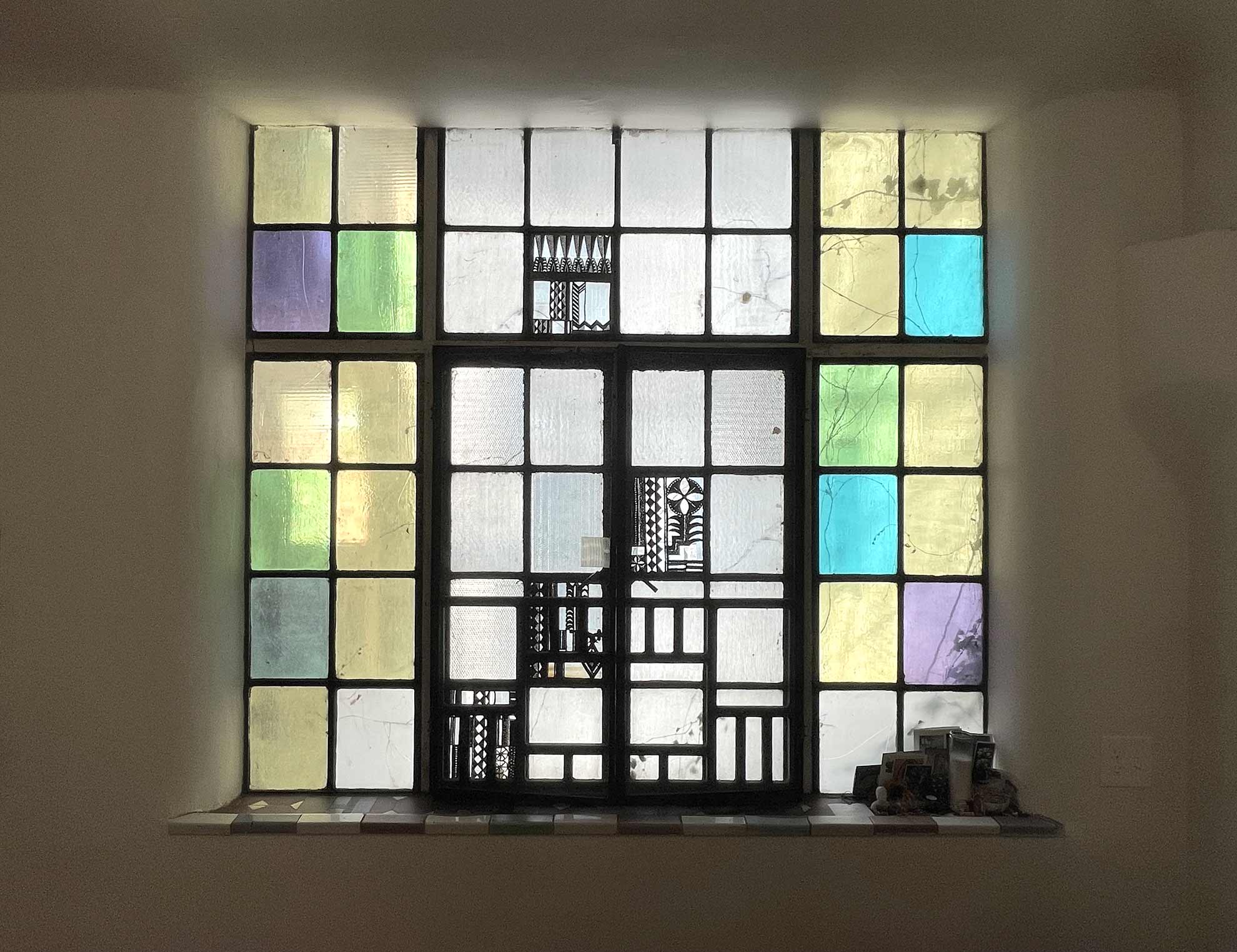
North-facing stained glass window with tin cutouts by Edgar Miller, assemblage by current resident; see documented light change during the day.
Edgar Miller’s approach to residential architecture and design has been characterized as the “handmade home,”* alluding to both the dominance of craft work and the use of found or repurposed materials within these structures. The phrase also invokes a utopian spirit relating to new social concepts of living spaces and the notion of architecture as constantly evolving. Yet, parallel to the embrace of craft at this time was a counter-movement that challenged the handmade and handiwork in favor of machine production guided by artistic vision, itself governed by utopian and democratizing aspirations.
Both movements crossed paths at Chicago’s Hull House, the first settlement house in the United States, where Sol Kogen and Edgar Miller met Jesús Torres and where Frank Lloyd Wright provoked the members of the Chicago Arts and Craft Society (CACS), of which he was a member, with his seminal lecture “The Art and Craft of the Machine.”
Hull House, which was founded by Jane Addams and Ellen Gates Starr in 1889, and which offered social services, civic education as well as art, craft, and theater programs to mostly immigrants in one of the poorest districts of Chicago, also became a site where different art and civic concepts were tested in response to rapid industrialization and the impact it had on workers and also on the art professions.
While Miller and Torres embraced the uniqueness of craft and the handmade, Wright, at least theoretically, rejected it in favor of the artistic use of machine production. Yet they all aspired to build unique spaces that were inspired by the concept of the Gesamtkunstwerk, and they all created works for some of Chicago’s biggest industrialists, who were not only the entrepreneurs of automation but also the patent holders of the machines they introduced.
*Richard Cahan, Michael Williams, Edgar Miller and the Hand-Made Home, 2009
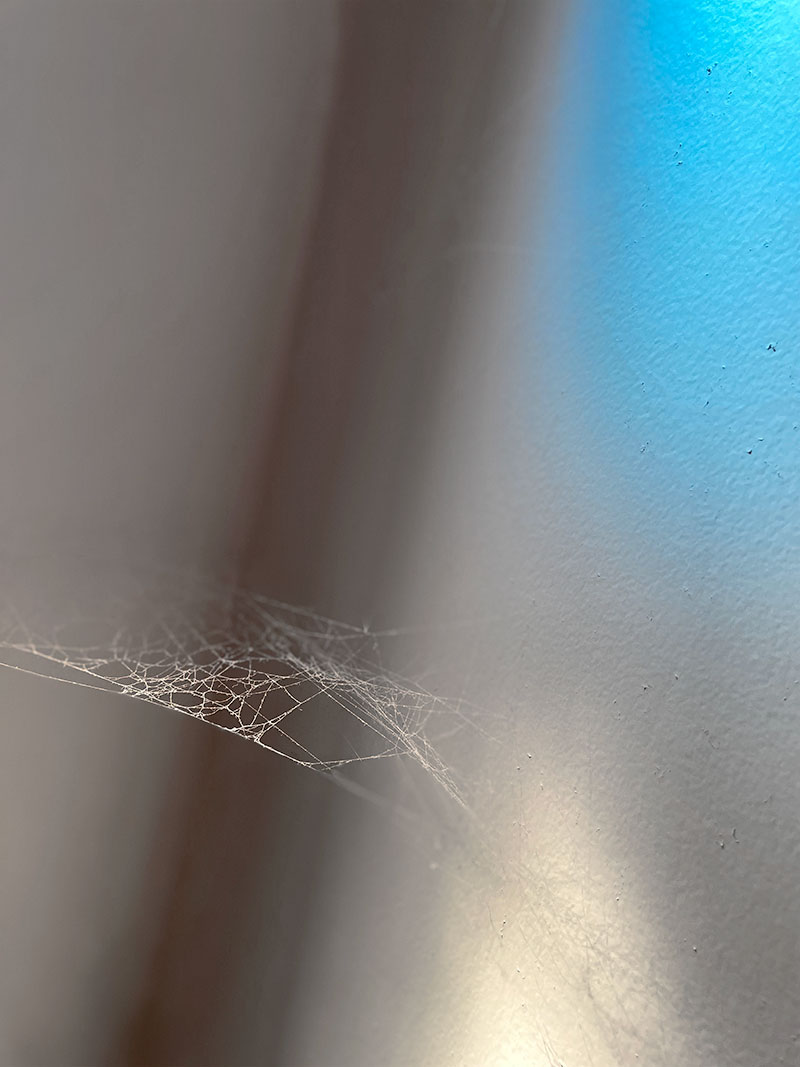
Light reflection on wall, 04/08/2023, 3:12pm
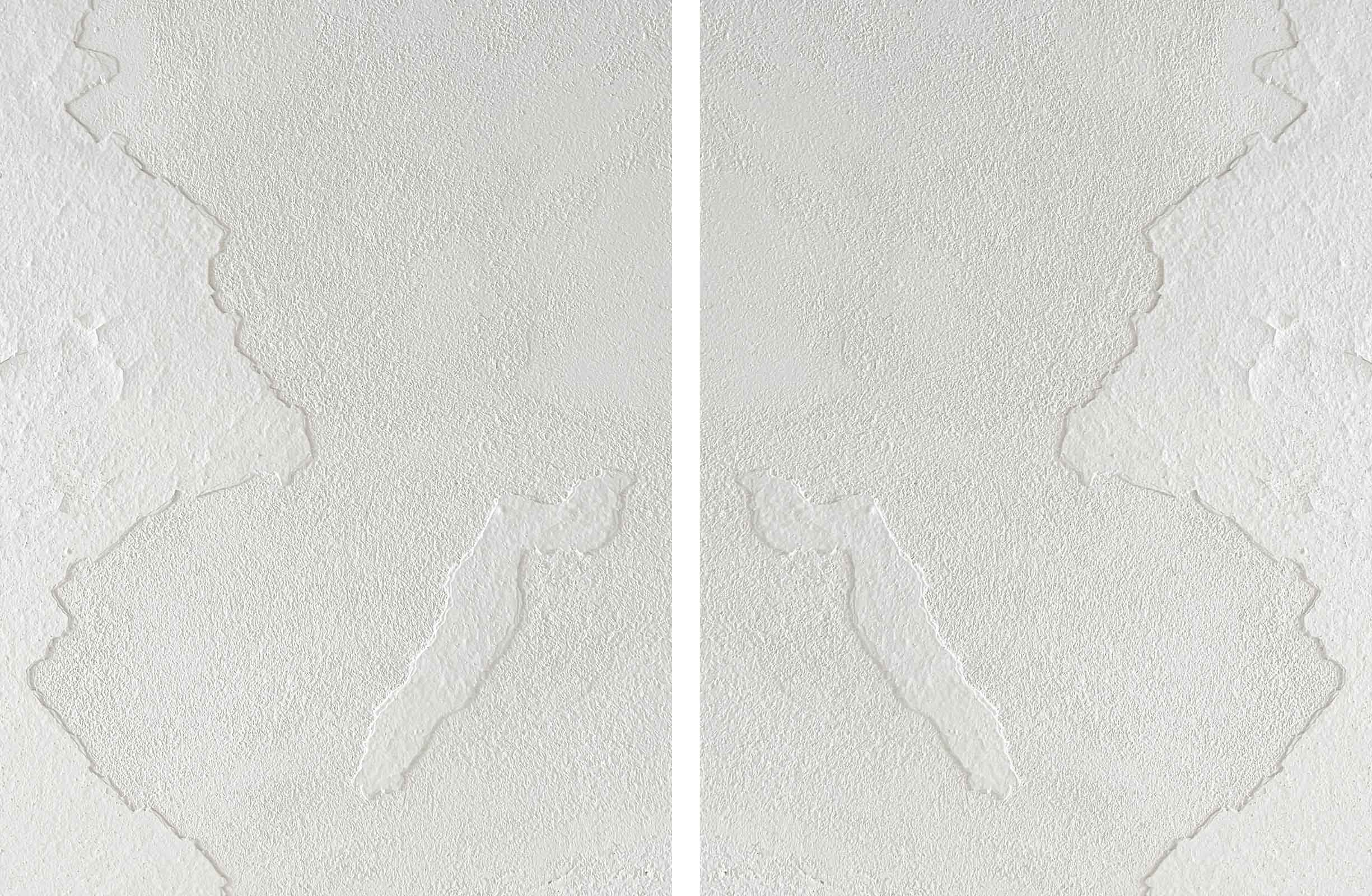
Map 1 (detail of plaster ceiling) shown in original orientation and mirrored
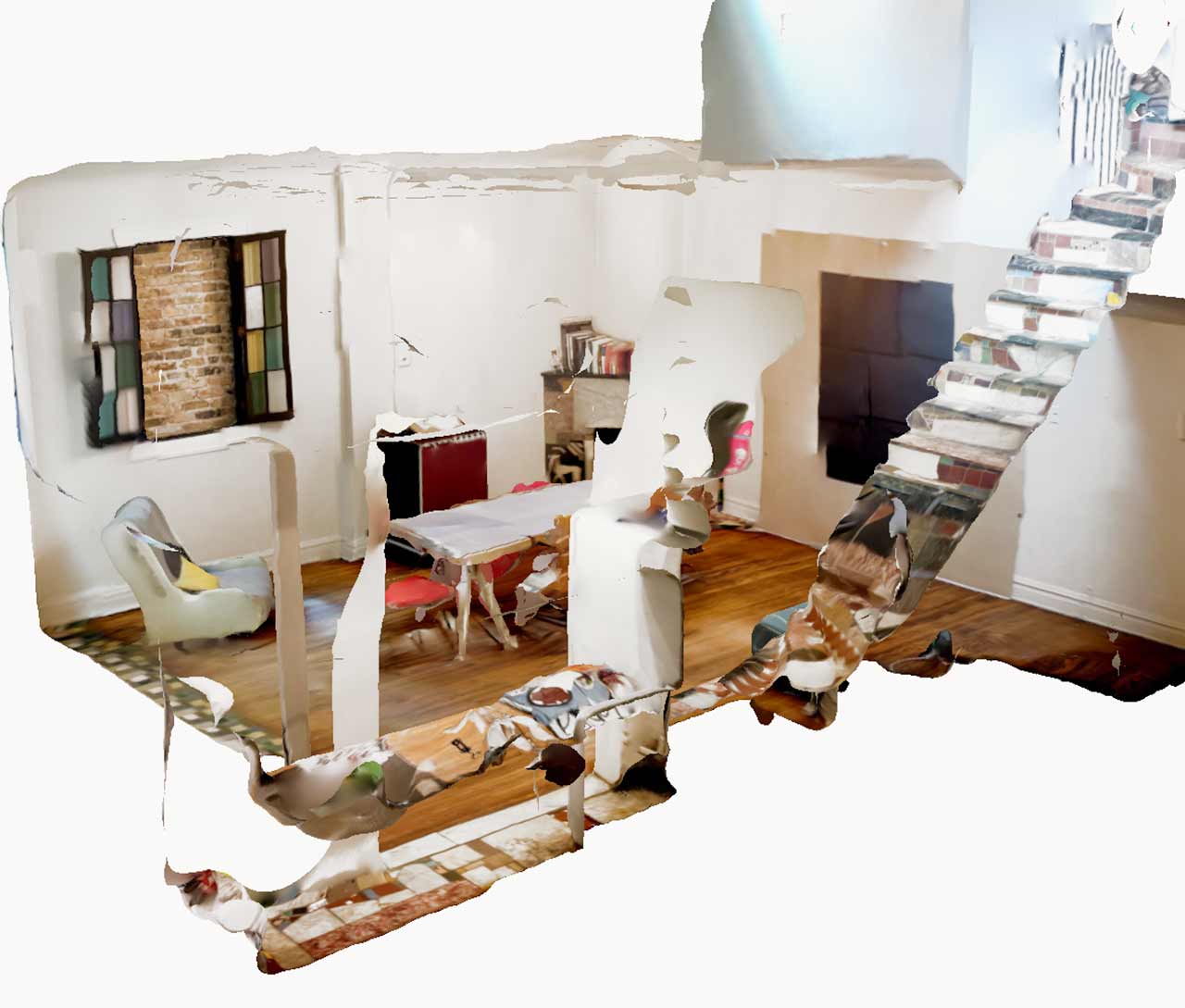
3D interior scan
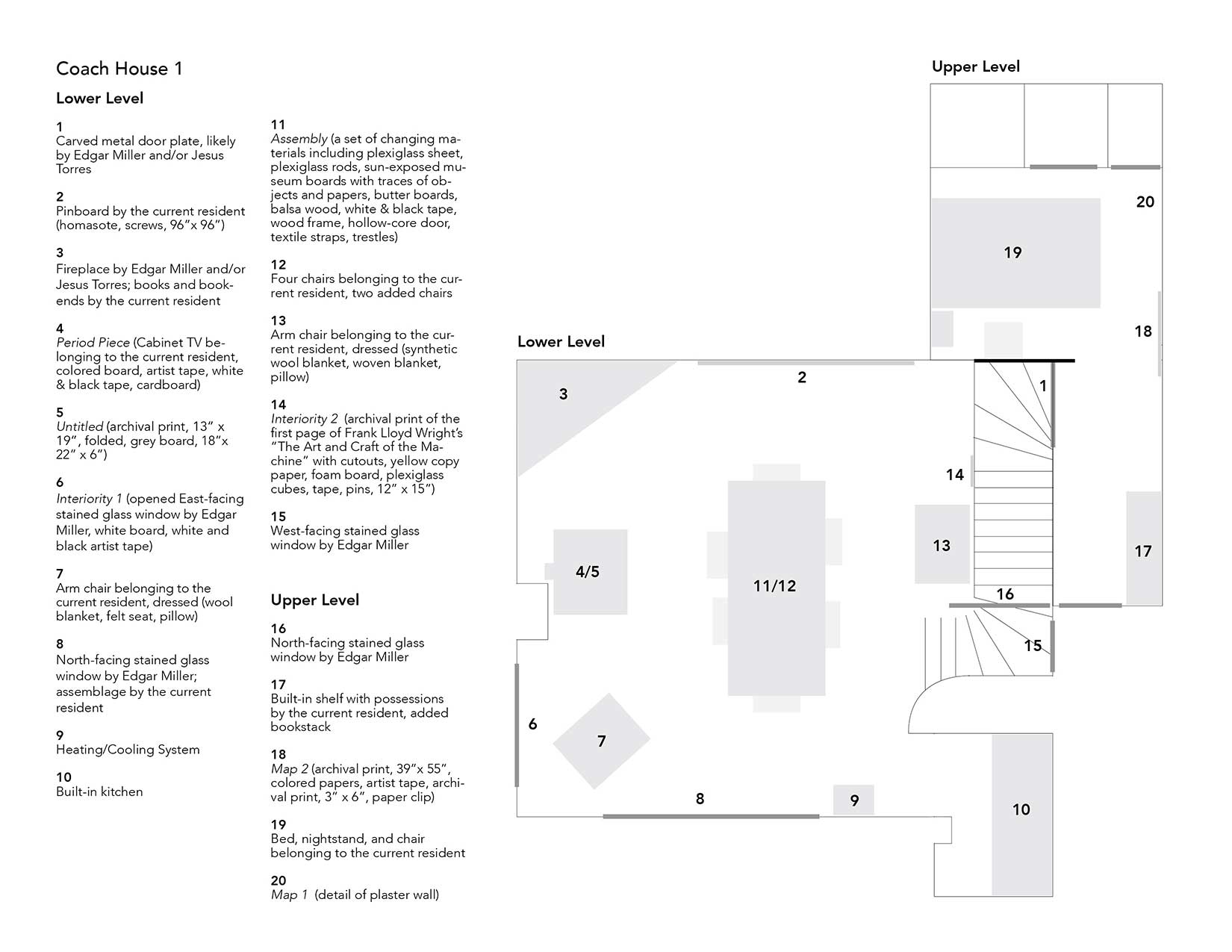
Floor plan for Open House; see floor plan as PDF
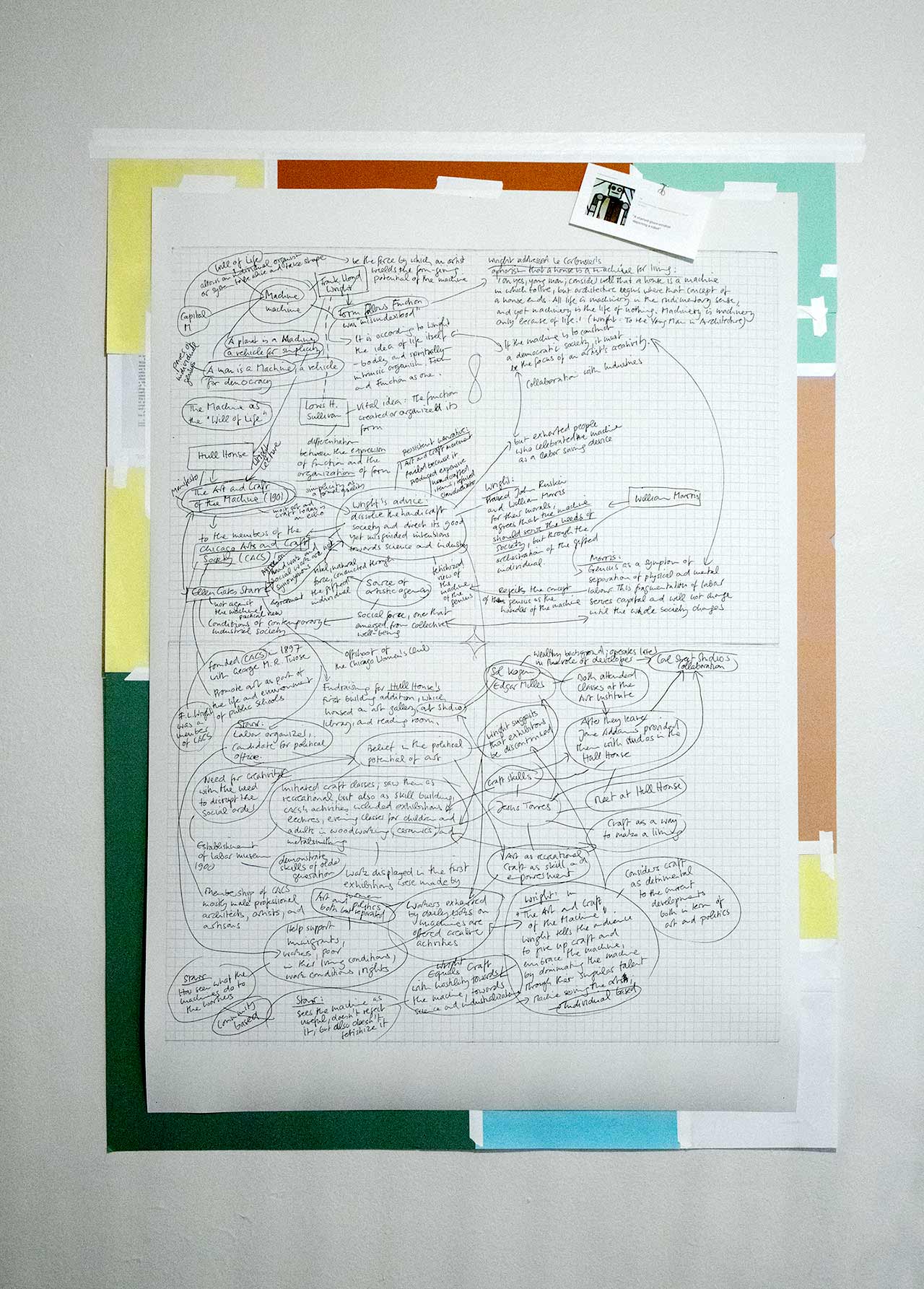
Map 2 (archival print, 39” x 55”. colored papers, artist tape, archivat print, 3" x 6", paper clip), See full map as PDF
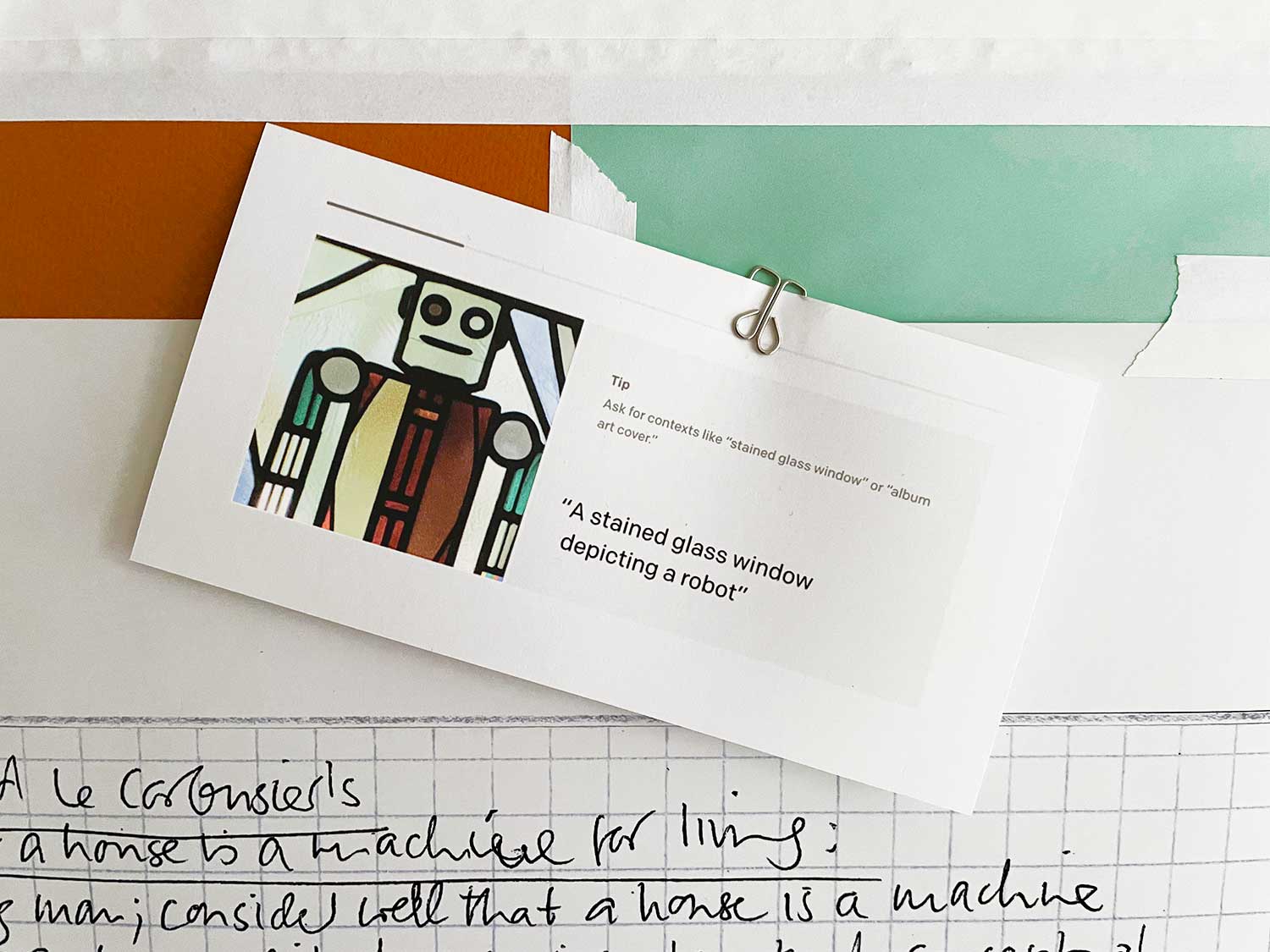
Printed screenshot from the DALL-E 2 image creation platform
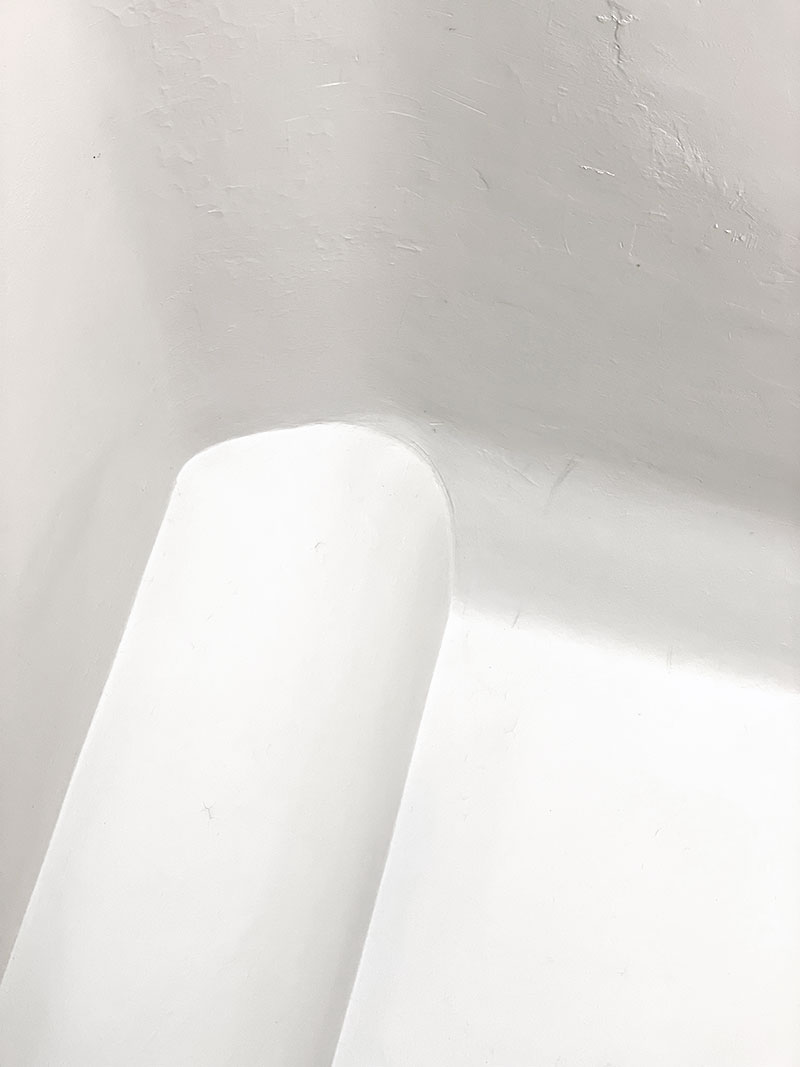
Wall and ceiling details
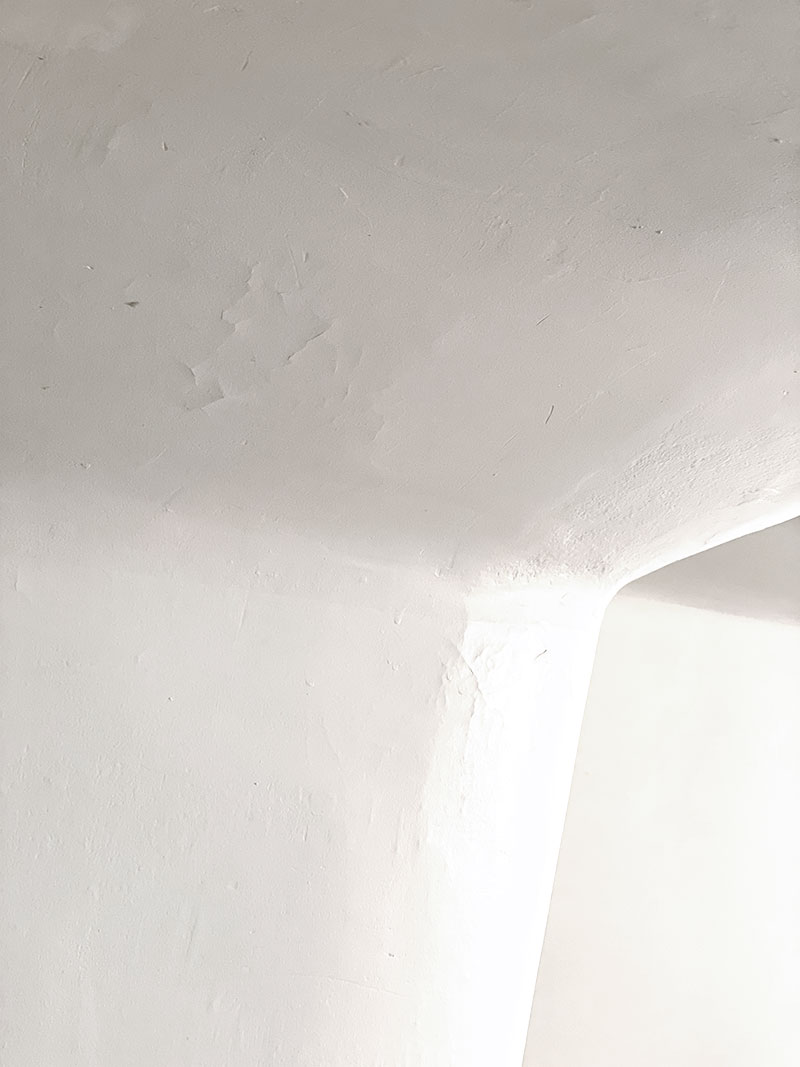
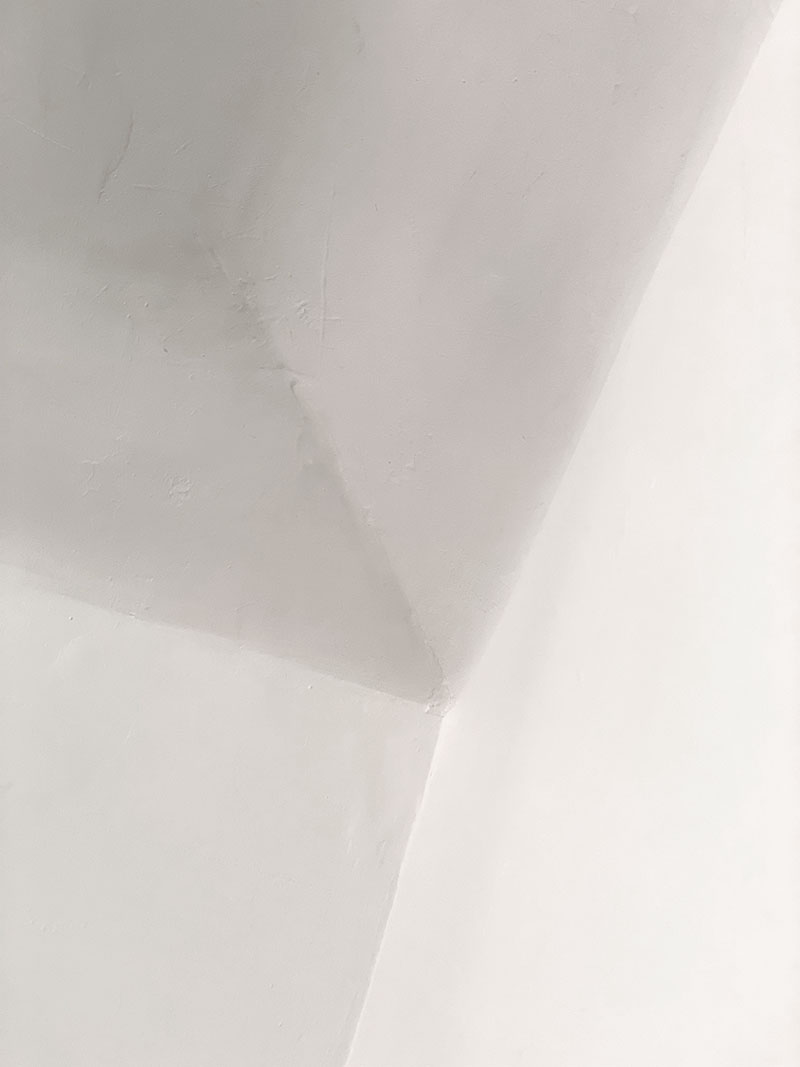
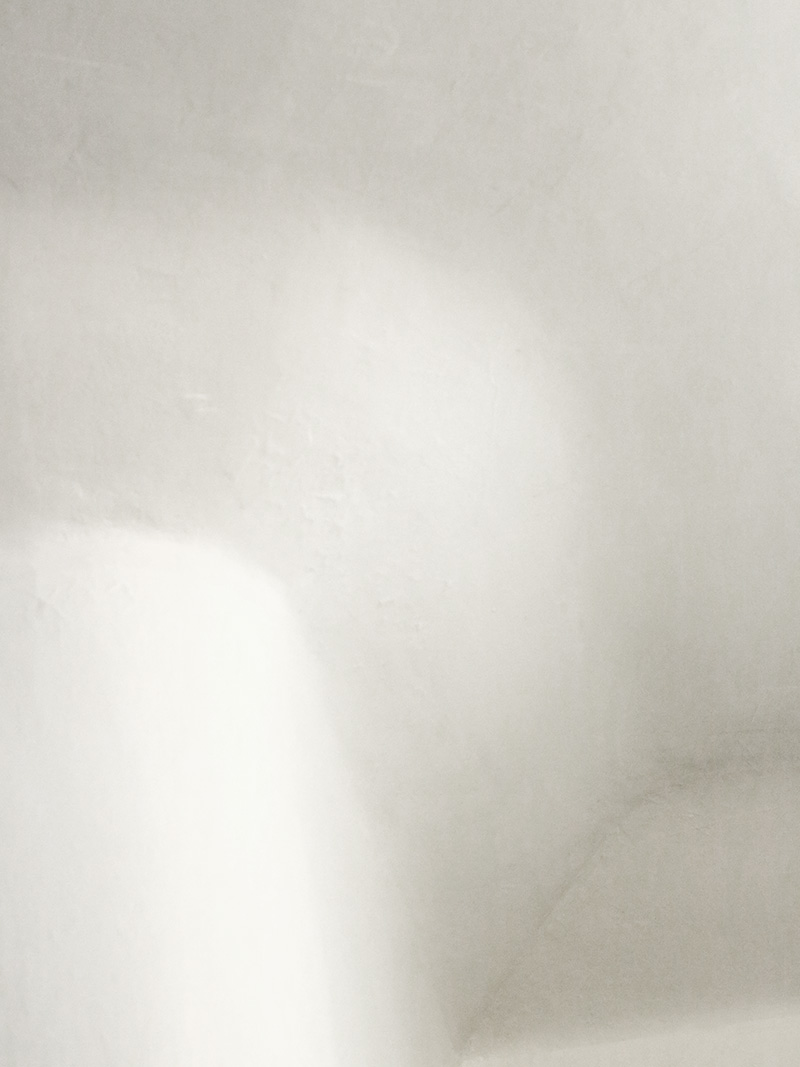
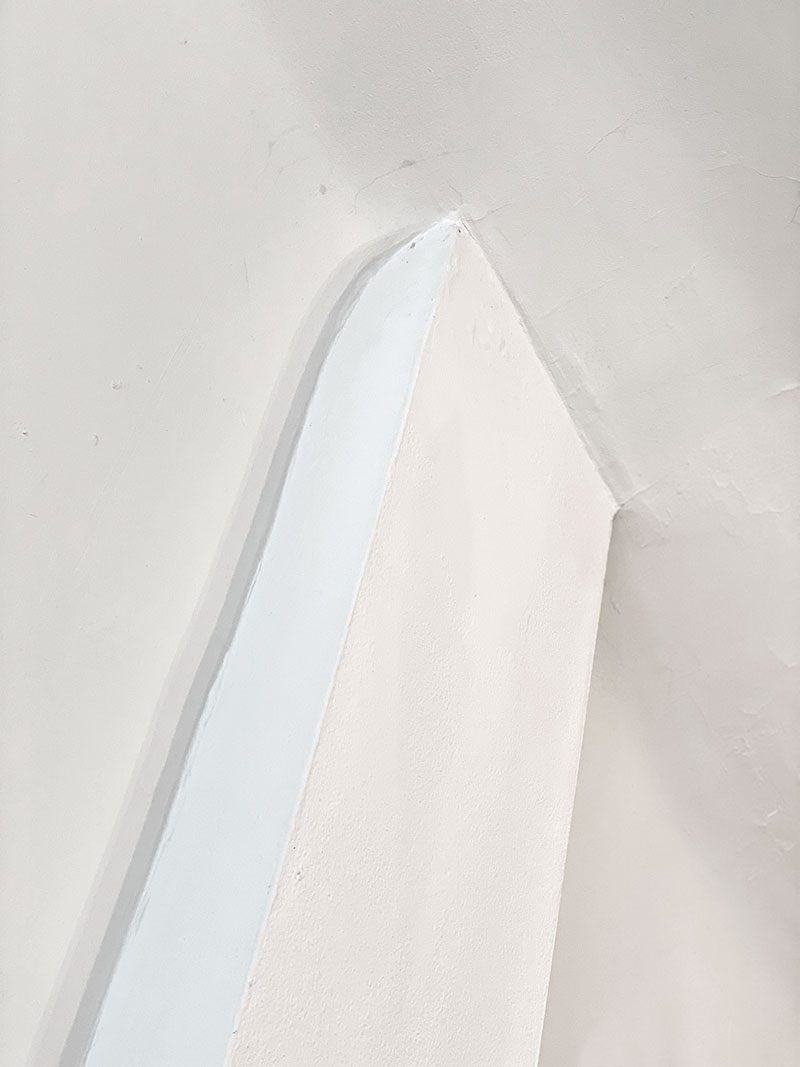
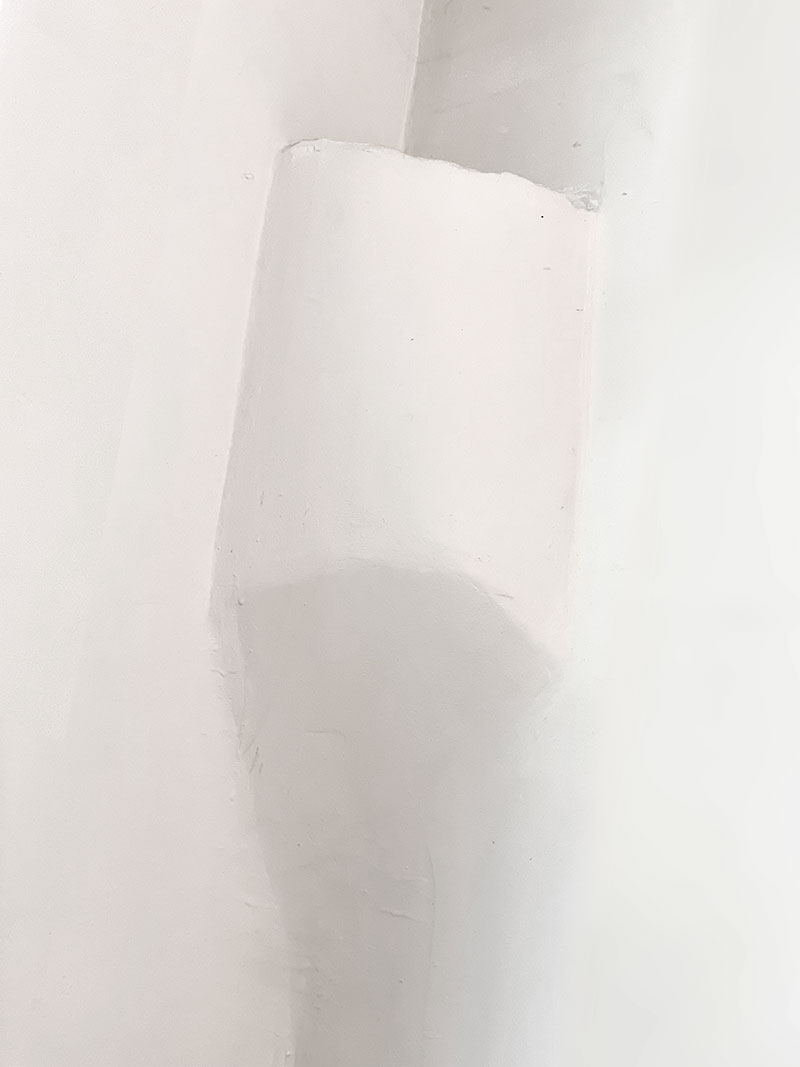
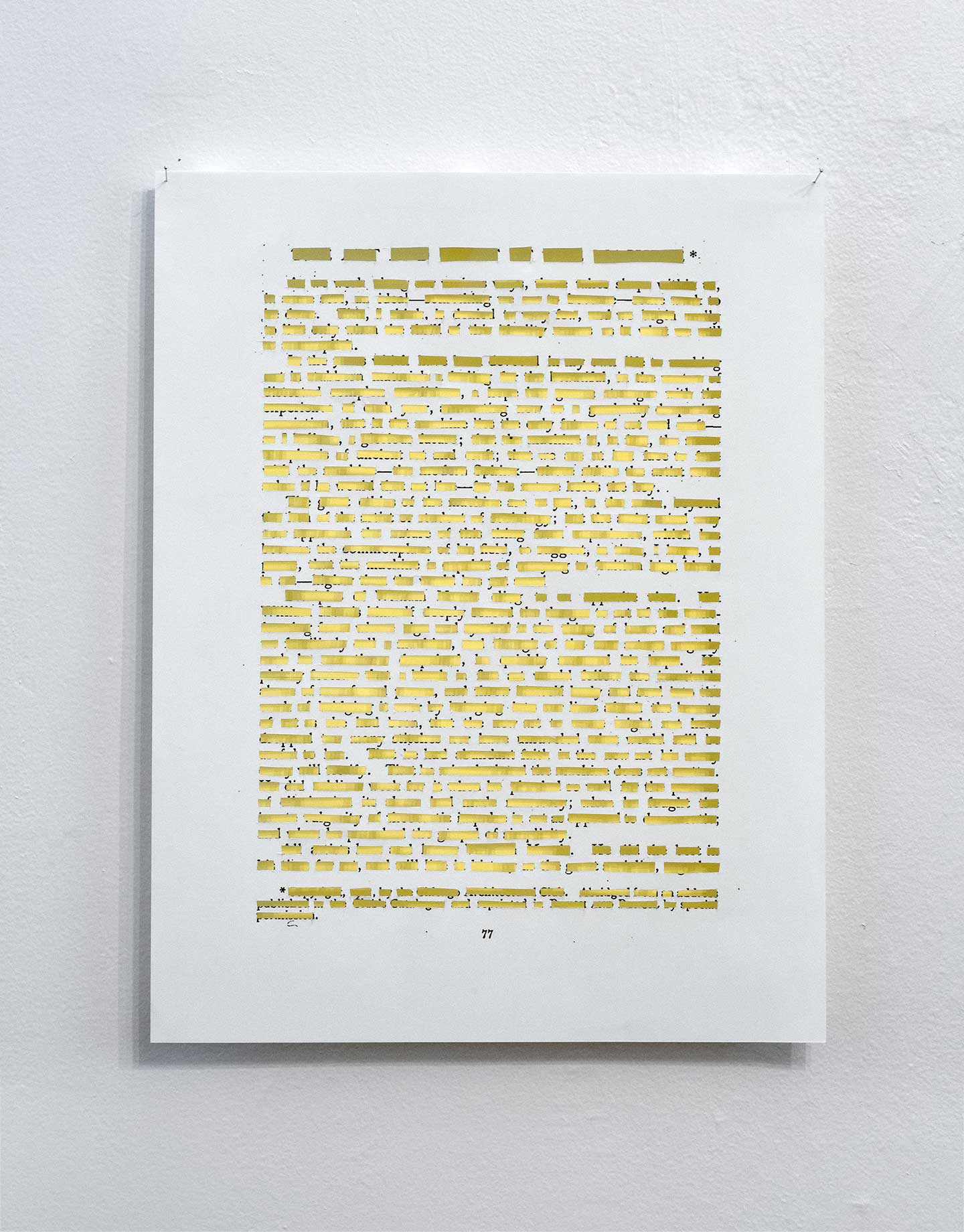
Interiority 2 (archival print of the first page of Frank Lloyd Wright’s “The Art and Craft of the Machine” with cutouts; yellow copy paper, foam board, plexiglass cubes, tape, pins, 12” x 15”)

Green copy paper


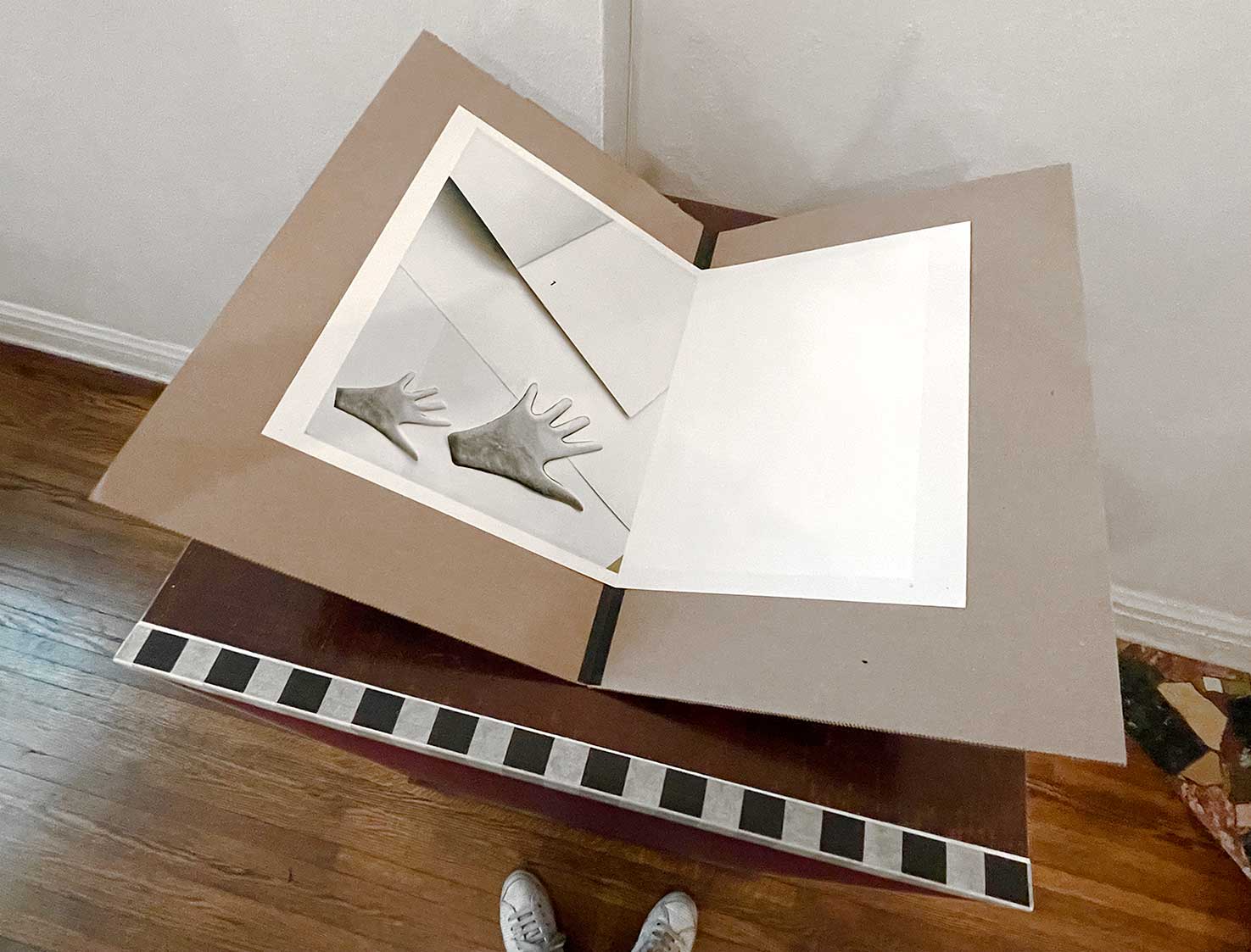
Period Piece (existing cabinet TV, colored archival boards, black and white artist tape, masking tape); Untitled (archival print, 12” x 17”, folded, archival paper, 13" x 19", folded, cardboard, grey board, 18”x 22” x 6”)
